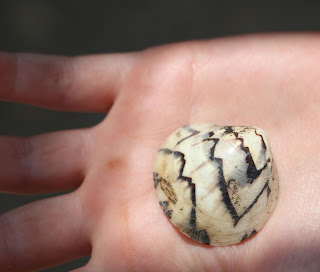Today I snorkelled over a
WW2 Corsair Fighter Plane wreck, ate Flying fox and Pigeon for dinner, and
discovered not all nocturnal large winged insects are moths. A day of exploration, North, South, East and West around Efate.
Our taxi for the day, Kaupi picked us
up at 8:30am, and we saw the effects of Cyclone Pam up close.
The local school in Mele Village is
teaching in tents. 3 Buildings have been completely rebuilt.
 |
| The new office and library |
 |
| Year 7 and 8 sang us a song |
New Zealanders have
sponsored some rebuilding, and in 3 days in June, they rebuilt rooms 7 & 8,
the office and Library.
Part of the rebuilt classrooms
We donated
some school items and soccer balls for the children, then Kaupi showed us around his
village Mele. Pigs and chickens
roam free.
Concrete buildings are
more popular than the traditional woven ones, because of their strength, but
are not as cool in the summer heat.
We travelled clockwise
around the island, past Melemaat, and the Mele Cascades, up the hill, and
onwards to a new adventure.
 |
| Eretoka in the distance, Lelepa on the right |
 |
| Lelapa Island on left, Moso Island on the right |
The
road is in good condition on this side of the island. Saw a several islanders making the most of their natural resources, and using the streams for water, laundry and bathing.
The USA had a base at Port Havannah in WW2, and left remants of their stay. A tiny museum on the roadside, with
Mark, gave Quinn an insight into some of the American activity in the
area.
The Coke bottles were
interesting.
They have a USA city stamped into the bottom of them, and a date on around the edge.
They have a USA city stamped into the bottom of them, and a date on around the edge.
 |
| Mark, wearing a Rotorua Marathon T shirt |
The US built a swimming pool, but it is used as a water reservoir now.
Further North were the
rusty tracks of a tank, stuck in Undine bay.
There were a few machinery wrecks in the vicinity, and the urchins explored them all.
I have no idea what type of machine, but Quinn managed to find some treasures to bring home.
Tighe and Quinn enjoyed this step back in time, and we watched the fish jump and swim in the tiny
bay.
There are several dug out
outrigger canoes in the bay. The
Islanders were fishing with handnets.
Lots of coconut
plantations around this part of the island, and a solar power station provides
power for the coconut processing plant.
Tighe thought that climbing the fence would make you “insane” because of the Bislama language on the sign.
We dropped some more
items and a soccer ball off at Napara school. They managed to get the roof put on 3 weeks ago, as a result
of generous donations from New Zealanders. The teachers accommodations had been destroyed. They are living in the area with the villagers. A child had injured his foot, so we squeezed everyone into
the van, and took him and the principal to the medical centre about several kms
away. Next stop, snorkelling a WW2 fighter plane wreck.
 |
| Napara School |
























No comments:
Post a Comment